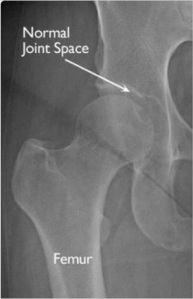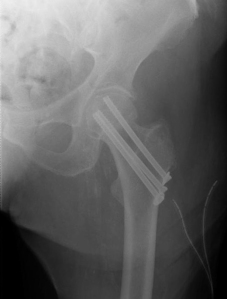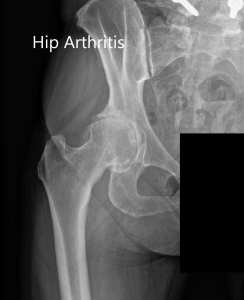In my last post I described the joy of my active lifestyle after recovering from a hip fracture several years ago, and the gradually increasing pain in my hip and limitations to my activities that began to creep in. In this post I will describe the next phase of my journey: taking action to address the limitations and discovering what would happen next, and when.
In early 2019 my primary care physician (PCP) indicated that I had osteoarthritis (OA) in my hip and that I would potentially need a new hip eventually. My understanding was that everyone has their own journey through this situation, likely depending on overall health, activity level, and perhaps other factors like genetics.
My summer was busy and active: I trekked on Mt Kilimanjaro reaching the 19,341-foot summit at the Roof of Africa; I hiked and backpacked in Oregon, carrying a 25-plus-pound backpack for the backpack sections; and I hiked for about 10 days in Romania. During the Oregon trip I managed to sprain my left ankle, which cut the hiking short. In some respects these activities were the culmination of all of the active years since my hip fracture. In retrospect, they probably accelerated the development of OA in my hip, though I certainly did not anticipate that at the time.
In any case, by the end of the Romania trip in early October I was quite uncomfortable. The range of motion in my hip was so limited that I had trouble dressing, going up and down stairs, getting in and out of my car, and even sitting down on the toilet. The latter was the most distressing.
When I got home I knew I was going to have to do something, though I didn’t yet have a plan; I kind of made it up as I went along. The first step was to rest: hopefully 2 weeks with greatly restricted activity. I confess that I did do a 10-mile group hike during this time, since it was a one-time opportunity. But I took at least every other day off, and most walks were 2-3 miles long: quite short for me. I also resumed doing some of the physical therapy exercises I’d been doing between hiking trips over the summer. Neither the rest, exercises, nor almost daily Ibuprofen helped – I felt like I was having an extended flare-up.
After barely a week I e-mailed my PCP to request an x-ray for evaluation, and we quickly agreed on a plan: depending on the x-ray results I would next return to physical therapy or go to orthopedics for a consult and further evaluation. I had the x-ray done the very next day, and the result was moderate joint space narrowing, in other words, moderate OA – but not bone-on-bone. So I made an appointment with physical therapy two weeks later, basically the first available appointment. It turned out to be with the same therapist I’d worked with during my recovery from the hip fracture.
During my first appointment I described the issues I was having, and her nearly deadpan reply was that they were the top 4 complaints of hip arthritis patients. She watched me walk down the hallway and pronounced that I had “the walk” of a hip arthritis patient. So in those respects there was nothing unusual. During her evaluation she noted that my right quadriceps muscle was very weak, probably a result of favoring the right leg for so long going up and down stairs (or steep hiking trails). And I mentioned that, in the processing of hauling myself into my car ever since the Romania trip, I was starting to develop an issue in my right shoulder.
She gave me several exercises, some (like for the quad and shoulder) new, others familiar but with new variations. Fortunately, these exercises helped fairly quickly, and within about a week I was doing much better with dressing, the car, and the toilet; stairs remained a work in progress for a few more months.
I was grateful to have a level of relief; I wasn’t pain-free, but it felt more manageable, even though I wanted to be able to walk more than I could without pain. I recalled a conversation I’d had in Oregon with a particular hiking friend, in which we’d discussed my hip. She suggested that I might want to see an orthopedist just on a consult-type basis, without an agenda or expectation for next steps, but just to better understand the arthritis progression process, a potential timeline, and options.
After my second PT appointment, about five weeks after the first, I asked my PCP for a referral to orthopedics for an exploratory consult, and she immediately approved it. I got to choose from doctors who had near-term appointments, making sure to select (with an orthopedic advice nurse’s help) a doctor who specialized in hips, or at least joints. As it turned out, the doctor I selected for my innocent consult had trained first as a mechanical engineer before going into medicine – and, in graduate school, she had designed replacement joints. I decided I’d made a good choice!
Just a couple of days later, on Friday, December 6, 2019, I had the consult. I started out describing the activities I’d done earlier in the summer, what I used to be able to do, and how limited I was by then. She pulled up my x-rays, showed them to me, and stated that my arthritis was actually severe. She pointed out that there was some texture on the surface of the head of my femur, indicating the beginning of breakdown of the bone structure.
I want to try to illustrate this with a few x-ray images that I found on-line. First is a normal hip. Note the amount of space – actually cartilage – between the ball and socket, and that the surface of the ball (head of the femur) looks smooth.
Of course, my hip had been repaired with 3 screws. The next image shows a (left) hip with 3 screws. It’s a little more difficult to see the surface of the head of the femur, and the joint space might be a little narrower. Note that the heads of the screws extend slightly outside the surface of the femur. When I noticed this on my own x-rays I commented to my surgeon, and he assured me that it was ok, since that part of the bone is covered with a strong, thick layer of muscles.
Finally, this is an example of an arthritic hip. The joint space is much narrower than in the other images, and there is some texture on the surface of the head of the femur. Some images of arthritic hips also show bone spurs. My x-ray looked a bit like this one, with the addition of the screws. Note that there is still some space, which represents cartilage, so this image does not yet represent bone-on-bone. My understanding had been that hip replacement was generally done only after the patient had reached bone-on-bone, which was said to be quite painful.
Once the orthopedist had characterized the degree of arthritis as severe and pointed out the bone’s surface texture, I asked the proverbial $64,000 question: how do I know when it’s getting time for a hip replacement? Mentally I was quite unprepared for her response: “You’re ready now.”
At the time I had only had two surgeries in my life: a tonsillectomy (and adenoidectomy) at the age of 5 and the hip repair surgery just over 8 years prior. I really didn’t have a choice about either surgery. My parents, along with their pediatrician, had decided about the first surgery. And if I hadn’t had the hip repair surgery promptly I would have ended up needing emergency hip replacement surgery. My view of surgery was essentially that it was a necessary evil – certainly not something to look forward to or to undergo proactively.
So my response was to start crying, and that seemed to be unexpected. I barely paid attention when she said her earliest surgery slot would be in March (three months away), though once I settled down I surmised that that had, at least potentially, influenced her statement that I was ready. She also understood how quickly and dramatically my normal activities had been affected, particularly in the 4 months between June and October. I was grateful that she placed my current situation in the full context of my normal lifestyle and activity level. When I updated my PCP about the consult session, she agreed that the orthopedist had, indeed, considered my entire situation.
My next task was to decide if I wanted to proceed by requesting to be put on the surgery schedule. I spent the weekend thinking about it and having discussions with several family members and close friends. The following Monday morning I e-mailed the orthopedist and told her I had decided I should go ahead and plan for the surgery. And so she became my surgeon.
The next stage of my journey was a waiting game, along with developing a strategy to prepare as well as possible for total hip replacement surgery.





Pingback: An Active Lifestyle with Growing Limitations | trailhiker
Pingback: Waiting Game, Training, and a False Alarm | trailhiker